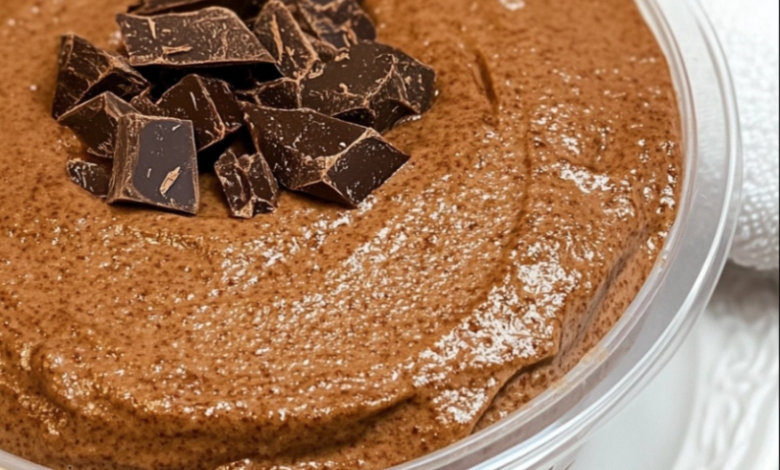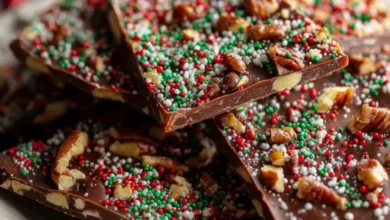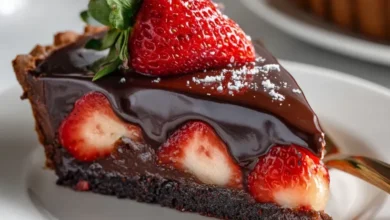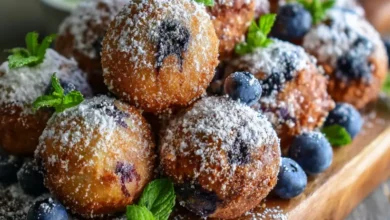The Ultimate Guide to Crafting the Perfect Chocolate Mousse: A Symphony of Air and Cocoa

There are few desserts as universally beloved yet deceptively simple as chocolate mousse. Its name, derived from the French word for “foam,” perfectly describes its essence: an ethereal, cloud-like texture that dissolves on the tongue, releasing an intense, rich chocolate flavor. Achieving this perfect balance between density and airiness is a culinary art form. This exclusive guide will not only walk you through a classic, foolproof recipe but will also delve into the science and soul of what makes a chocolate mousse truly extraordinary.
Beyond being a mere recipe, this is an exploration of a dessert that has graced fine dining tables and family kitchens for generations. We will uncover the key ingredients, the critical techniques, and the little secrets that elevate a good mousse into a great one.
Deconstructing the Dream: The Key Ingredients
Every sublime chocolate mousse begins with the highest quality ingredients. Each component plays a specific role in creating the final texture and taste.
1. The Chocolate: The Heart of the Matter
The chocolate you choose is non-negotiable. It is the star. We recommend using a high-quality couverture dark chocolate with a cocoa content between 60% and 70%. This range offers a deep, complex chocolate flavor without being overly bitter.
- Why Dark Chocolate? Its structure sets firmly when chilled, providing stability. Milk chocolate contains more sugar and fat, which can make the mousse grainy and prevent it from holding air properly. White chocolate can be used but requires significant recipe adjustments due to its high cocoa butter content.
- Pro Tip: Always chop your chocolate uniformly to ensure it melts evenly and smoothly.
2. The Eggs: The Architectural Marvel
A classic mousse uses eggs in two ways:
- Egg Yolks: These are the rich, emulsifying agents. They blend seamlessly with the melted chocolate, adding a velvety custard-like texture and a luxurious depth of color and flavor.
- Egg Whites: These are the primary leavening agents. When whipped to stiff peaks, they are filled with millions of tiny air bubbles that give the mousse its characteristic lightness and volume.
3. The Cream: The Pillar of Richness
Heavy whipping cream (with a fat content of at least 35%) introduces a creamy, decadent fat that contrasts beautifully with the airiness of the egg whites. Whipped to soft peaks and folded in, it contributes to the mousse’s melt-in-your-mouth quality.
4. The Sweetener: A Delicate Balance
Since dark chocolate is already quite flavorful, the sweetener is used sparingly. A small amount of granulated sugar or confectioner’s sugar is often added to the egg whites while whipping to stabilize them and add a subtle sweetness. Some recipes use a sugar syrup for a silkier texture.
5. The Flavor Enhancer: The Secret Weapon
A pinch of salt and a splash of pure vanilla extract or a tablespoon of strong coffee or liqueur (like Grand Marnier or dark rum) are not merely optional. Salt enhances the chocolate flavor, while coffee intensifies it without making the mousse taste like coffee. Alcohol adds a sophisticated, nuanced background note.
The Art of Technique: A Step-by-Step Guide to Perfection
This recipe follows the classic French method, which, while requiring care, yields the most authentic and exquisite result.
Yields: 6 servings
Prep time: 30 minutes
Chill time: 4 hours (minimum)
Ingredients:
- 200g (7 oz) high-quality dark chocolate (60-70% cocoa), finely chopped
- 4 large eggs, separated (at room temperature)
- 50g (1/4 cup) granulated sugar, divided
- 240ml (1 cup) heavy whipping cream, cold
- 1 teaspoon pure vanilla extract
- A pinch of fine sea salt
- 1 tablespoon coffee or orange liqueur (optional)
Equipment:
- Heatproof bowl
- Saucepan (for a double boiler)
- Two large mixing bowls
- Electric hand mixer or stand mixer
- Spatula
Method:
Step 1: Melting the Chocolate
Create a double boiler by placing a heatproof bowl over a saucepan of gently simmering water, ensuring the bottom of the bowl does not touch the water. Add the chopped chocolate and stir occasionally until it is completely melted and smooth. Remove the bowl from the heat and let it cool slightly. If using, stir in the liqueur or coffee at this stage.
Step 2: Preparing the Egg Yolks
While the chocolate is still warm (but not hot), quickly whisk in the four egg yolks, one at a time, until fully incorporated. The mixture will thicken slightly. This step is crucial for creating a stable, creamy base. Set this chocolate-yolk mixture aside to cool to room temperature.
Step 3: Whipping the Egg Whites
In a scrupulously clean, grease-free bowl, whip the four egg whites with a pinch of salt. Start on low speed until foamy, then gradually increase the speed. When soft peaks form, gradually add half of the sugar (2 tablespoons) and continue whipping until you achieve stiff, glossy peaks. Be careful not to over-whip, as this will make the whites grainy and difficult to fold in.
Step 4: Whipping the Cream
In another chilled bowl, whip the cold heavy cream with the remaining sugar and the vanilla extract until you achieve soft peaks. The cream should be billowy and hold its shape but not be buttery.
Step 5: The Delicate Dance of Folding
This is the most critical step where the mousse’s texture is made or broken.
- Lighten the Base: Take about one-third of the whipped egg whites and stir them vigorously into the cooled chocolate mixture. This first addition loosens the dense chocolate base, making it easier to fold in the remaining ingredients without deflating them.
- Incorporate the Whites: Using a large spatula, gently fold in the remaining two-thirds of the egg whites. Use a cutting motion, turning the bowl as you go, until no white streaks remain. The goal is to retain as much air as possible.
- Incorporate the Cream: Finally, gently fold in the whipped cream in the same careful manner until the mixture is uniform in color.
Step 6: Chilling to Set
Spoon the mousse into individual serving glasses or a large serving bowl. Cover with plastic wrap, ensuring it touches the surface to prevent a skin from forming. Refrigerate for at least 4 hours, but ideally overnight. This resting period allows the flavors to meld and the structure to firm up perfectly.
Serving and Customization: The Final Flourish
Serve your chocolate mousse chilled. The simplicity of its deep, chocolatey flavor is a delight in itself, but you can elevate it with elegant garnishes:
- A dollop of freshly whipped cream
- Chocolate shavings or cocoa powder dusted on top
- Fresh berries like raspberries or strawberries, which provide a beautiful tart contrast.
- A sprig of mint for a fresh aroma.
Conclusion: More Than a Dessert
Mastering the perfect chocolate mousse is a rewarding journey. It teaches patience, precision, and respect for ingredients. It’s a dessert that speaks of elegance and care, a timeless classic that never fails to delight. By understanding the role of each component and embracing the gentle technique of folding, you can create a dessert that is not just a treat for the palate, but a true celebration of the art of cooking. So, arm yourself with a spatula, select the finest chocolate you can find, and prepare to create your own symphony of air and cocoa.



